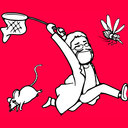Role of classic signs as diagnostic predictors for enteric fever among returned travellers: Relative bradycardia and eosinopenia.
Mots clés
Abstrait
BACKGROUND
The lack of characteristic clinical findings and accurate diagnostic tools has made the diagnosis of enteric fever difficult. We evaluated the classic signs of relative bradycardia and eosinopenia as diagnostic predictors for enteric fever among travellers who had returned from the tropics or subtropics.
METHODS
This matched case-control study used data from 2006 to 2015 for culture-proven enteric fever patients as cases. Febrile patients (>38.3°C) with non-enteric fever, who had returned from the tropics or subtropics, were matched to the cases in a 1:3 ratio by age (±3 years), sex, and year of diagnosis as controls. Cunha's criteria were used for relative bradycardia. Absolute eosinopenia was defined as an eosinophilic count of 0/μL.
RESULTS
Data from 160 patients (40 cases and 120 controls) were analysed. Cases predominantly returned from South Asia (70% versus 18%, p <0.001). Relative bradycardia (88% versus 51%, p <0.001) and absolute eosinopenia (63% versus 38%, p = 0.008) were more frequent in cases than controls. In multivariate logistic regression analysis, return from South Asia (aOR: 21.6; 95% CI: 7.17-64.9) and relative bradycardia (aOR: 11.7; 95% CI: 3.21-42.5) were independent predictors for a diagnosis of enteric fever. The positive likelihood ratio was 4.00 (95% CI: 2.58-6.20) for return from South Asia, 1.72 (95% CI: 1.39-2.13) for relative bradycardia, and 1.63 (95%CI: 1.17-2.27) for absolute eosinopenia. The negative predictive values of the three variables were notably high (83-92%);. however, positive predictive values were 35-57%.
CONCLUSIONS
The classic signs of relative bradycardia and eosinopenia were not specific for enteric fever; however both met the criteria for being diagnostic predictors for enteric fever. Among febrile returned travellers, relative bradycardia and eosinopenia should be re-evaluated for predicting a diagnosis of enteric fever in non-endemic areas prior to obtaining blood cultures.




